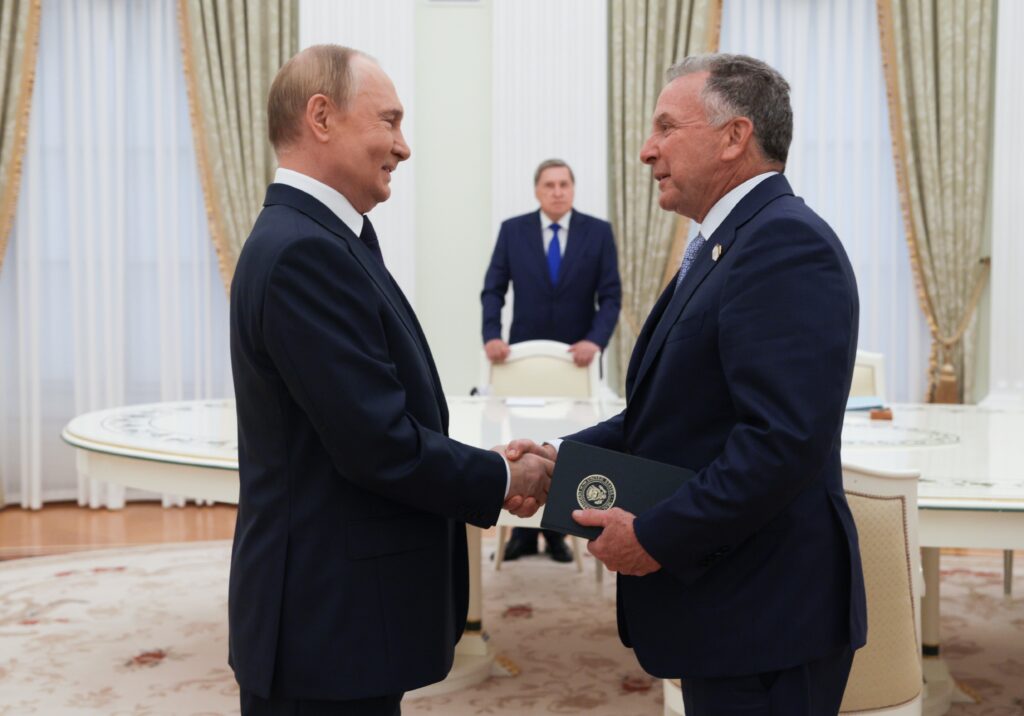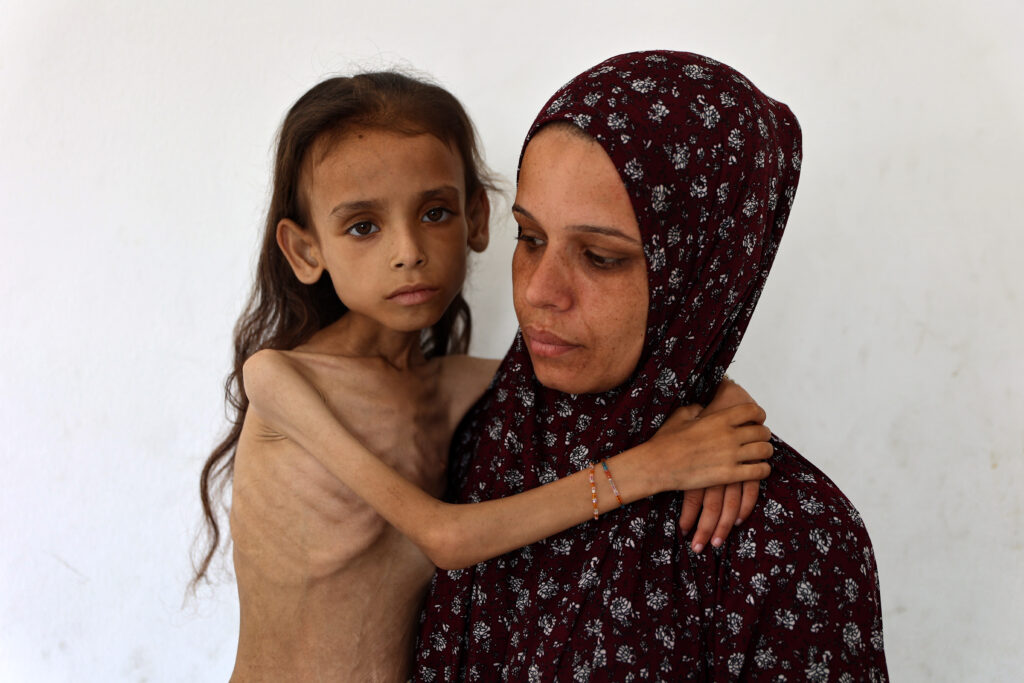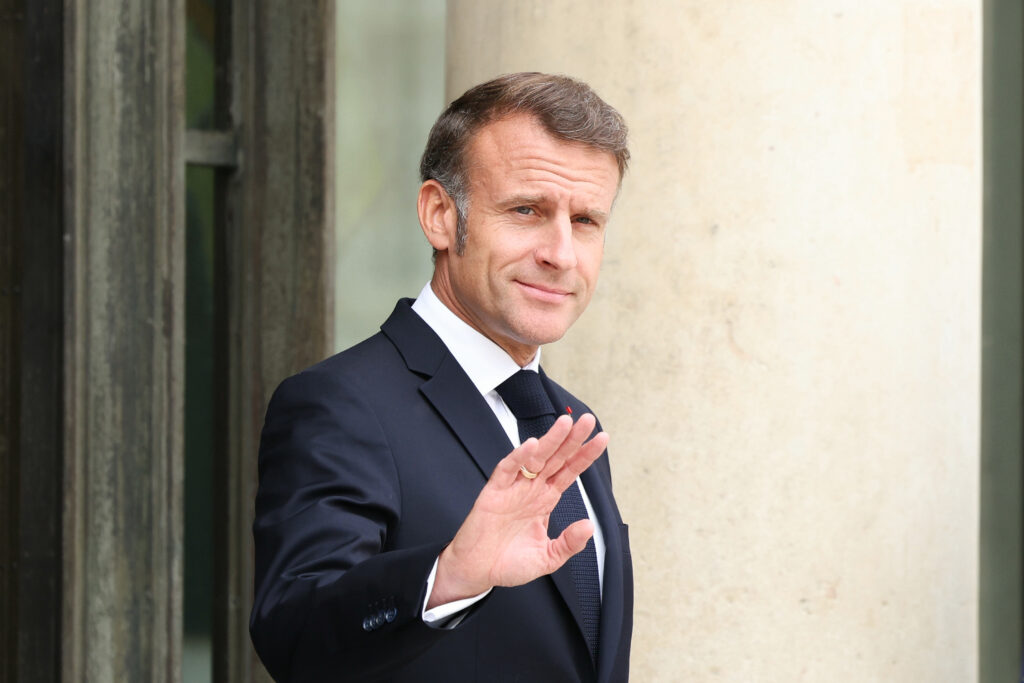Investi président, le conservateur Karol Nawrocki veut éviter “le déclin” de la Pologne
L’historien conservateur Karol Nawrocki, investi mercredi président de la Pologne, a promis de “combattre ceux qui poussent la nation vers le déclin”, au cours de sa prestation de serment devant le Parlement.Il a promis à cette occasion d’être “la voix du peuple polonais”, de “ceux qui veulent une Pologne souveraine”.Vainqueur du deuxième tour, le 1er juin, de l’élection présidentielle, M. Nawrocki, 42 ans, s’est prononcé pour “la Pologne qui est dans l’Union européenne mais qui n’est pas l’Union européenne et qui est et restera la Pologne”.”Nous devons combattre ceux qui poussent la nation vers le déclin et la dégradation”, a-t-il insisté, citant Ignacy Paderewski, un Premier ministre polonais du début du XXe siècle.Le nouveau chef de l’Etat a également souligné l’importance de l’alliance de la Pologne avec les Etats-Unis et a promis que son pays jouerait un rôle actif dans l’Otan mais n’a pas du tout évoqué l’Ukraine.Il a critiqué l’actuel gouvernement polonais, celui de Donald Tusk, disant qu’il n’était “plus possible de gouverner de cette manière”, annonçant une série d’initiatives législatives, notamment dans le domaine économique, en vue de “réveiller les aspirations du peuple polonais”.- “Confrontation avec le gouvernement” -M. Tusk a quant à lui estimé, devant la presse, que Karol Nawrocki avait “parlé assez franchement de la confrontation avec le gouvernement” dans son discours d’inauguration.”Et bien sûr nous y sommes prêts”, a-t-il martelé, avant de lancer : “nous défendrons fermement la Constitution” si le président cherche à empiéter sur les compétences du gouvernement.De son côté, M. Nawrocki a à plusieurs reprises dit considérer le gouvernement de coalition quadripartite en place comme “le pire de l’histoire” de la Pologne démocratique.Pendant sa prestation de serment, quelques milliers de personnes arrivées de tout le pays se sont rassemblées devant le Parlement et dans d’autres endroits de la capitale Varsovie pour exprimer leur soutien au chef de l’Etat. “Il ne rampe pas devant Bruxelles”, a commenté auprès de l’AFP Jan Smolinski, un mineur retraité de 75 ans, s’exclamant ensuite : “C’est un vrai Polonais, de chair et de sang”.Marietta Borcz, une assistante dentaire de 57 ans, a dit que c’était “important” pour elle que Karol Nawrocki “soit catholique et qu’il défende les valeurs chrétiennes”.Dans la journée, ce dernier a à cet égard participé à une messe pour la Patrie. Dans l’après-midi, au cours d’une cérémonie officielle, il doit prendre le commandement suprême des forces armées polonaises.- Novice en politique -Au deuxième tour de la présidentielle, qu’il a remporté avec une courte majorité, M. Nawrocki, a été soutenu par le principal parti d’opposition, Droit et Justice (PiS, nationaliste).Il a battu le pro-européen Rafal Trzaskowski, un grave revers pour la coalition au pouvoir depuis bientôt deux ans et qui confirme la forte polarisation politique dans ce pays membre de l’Otan et de l’UE, voisin et grand soutien de l’Ukraine face à l’invasion russe.Elu pour un mandat de cinq ans, le chef de l’Etat exerce principalement en Pologne une influence sur la politique étrangère et de défense mais peut également proposer des lois et mettre son veto sur celles votées par le Parlement.M. Nawrocki remplace à la présidence le conservateur Andrzej Duda, arrivé au terme de son deuxième mandat, avec qui le gouvernement favorable à l’Union européenne était déjà en désaccord sur nombre de sujets aussi importants que le respect de l’Etat de droit et la libéralisation de l’avortement.Novice en politique intérieure et dans les relations internationales, cet historien est un admirateur de Donald Trump, qu’il a brièvement rencontré à la Maison Blanche peu avant le premier tour, le 18 mai, du scrutin. Pendant sa campagne, il s’est notamment opposé à l’idée d’une adhésion de l’Ukraine à l’Alliance atlantique et lui a reproché de ne pas avoir “fait preuve de gratitude pour ce que les Polonais ont fait”.Avec son slogan “La Pologne d’abord, les Polonais d’abord”, il a pris pour cible le million de réfugiés ukrainiens vivant dans son pays.Le 31 juillet dernier, M. Nawrocki s’est pourtant entretenu au téléphone avec Volodymyr Zelensky, qui s’est déclaré “reconnaissant” d’avoir entendu “l’assurance d’un soutien continu à l’Ukraine”.Mercredi, le président ukrainien a félicité son homologue polonais, affirmant, dans un message sur X, attendre “avec impatience un dialogue constructif et direct dans l’intérêt commun de nos deux nations”.









